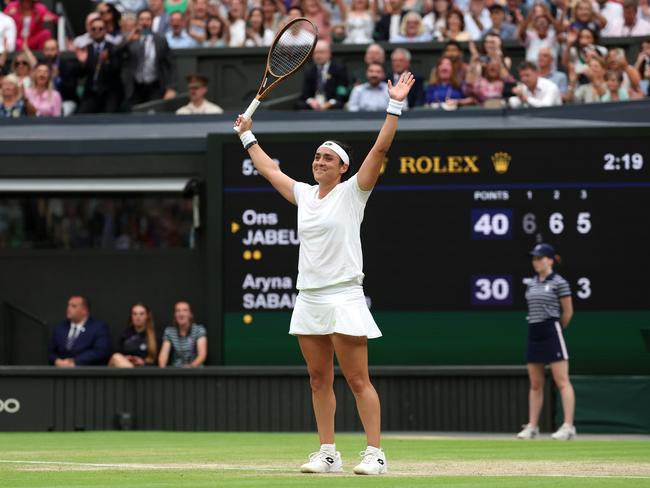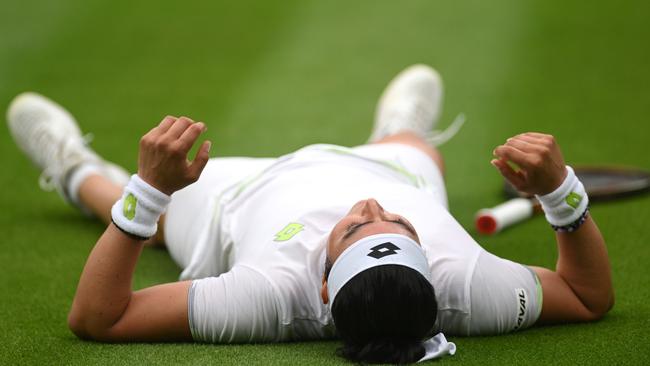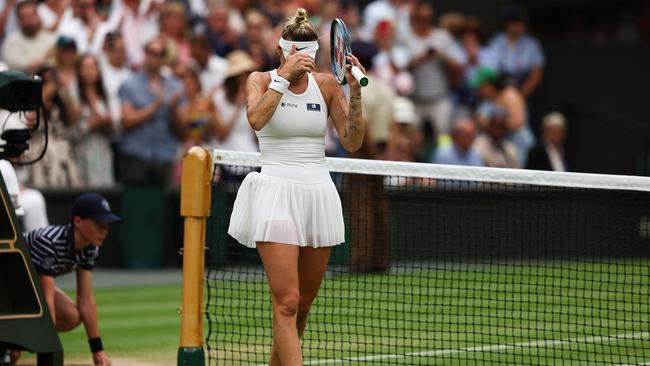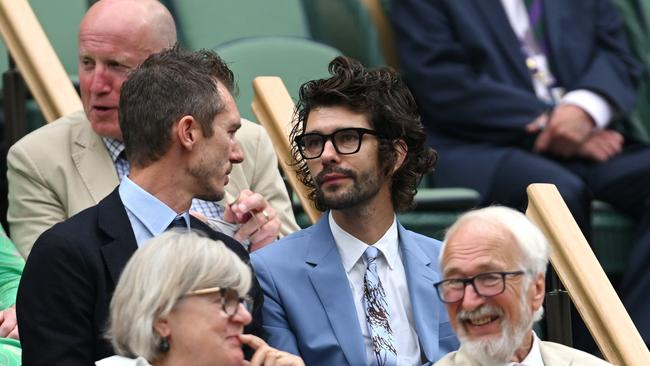Wimbledon 2023: Why the women’s final will be superior to the men’s
This year’s women’s Wimbledon final is the hottest ticket in town, and its time to admit that the women’s game is superior to the men’s.

Not one person on Centre Court for the two women’s semi-finals was feeling grumpy that they had drawn the short straw. Ben Whishaw, the actor, was sitting in the Royal Box, looking like he might burst out of his jacket with delight. As for the rest of us, we were left feeling privileged to have become wrapped up in such mixed emotions and to have witnessed tennis of ethereal quality.
Today it is the men’s turn and, honestly, Novak Djokovic will have to execute a handstand mid-rally to generate the noise, passion and delight the final four women evoked. This has been a championships in which it is the women who have shone, who have managed to combine compelling personal narratives with exceptional athleticism, imagination and power.

Perhaps now, at last, the sniffiness can stop. It does not matter that the women play the best of three sets and yet earn the same amount of prize money. It does not matter that their serves are not usually as fast, nor does it matter that come tomorrow (Saturday) afternoon, a woman who has never won Wimbledon before will lift the Venus Rosewater Dish. So much - too much - is made of Djokovic’s long walk towards history, that he could equal Margaret Court’s record of 24 grand-slam singles titles. It will be nice for him, obviously, but a bit processional for the rest of us.
The women’s game lacks clear rivalries but the hype around Carlos Alcaraz being on the cusp of challenging Djokovic’s dominance feels manufactured, as if we are all mildly terrified of a world where we do not know who the kings of tennis will be should the Serb falter.
The seedings in women’s tennis offer a guide but not a promise. It is better that way, especially when Ons Jabeur, the No 6 seed, has to summon the very best tennis of her career to defeat Aryna Sabalenka, the Amazonian and imperious No 2 seed. One reason the women have been superior this year is that the upsets have not been about players off form but about players reaching exceptionally high levels. Take the quarter-final between Jessica Pegula, the No 4 seed, and Marketa Vondrousova, ranked 42. That the Czech won was not evidence of a weakness in the women’s game, but of depth. Vondrousova is supremely athletic, but wrist surgery has limited her exposure. Pegula did not play below par, instead the American contributed to a compelling contest and will not be at all surprised that Vondrousova has reached the final.

Billie Jean King is lauded when we see her in the Royal Box and the recent BBC documentary series Gods of Tennis paints her as the guardian angel of the sport for her fight to win equal pay at the grand-slam tournaments. A good many people will smile benignly at King and in the next breath wonder if it is fair that men play five sets and women only three.
The debate of women playing fewer sets will not disappear.Whenever someone raises the point, they usually think they are being very cunning, as if spotting a little known loophole in the battle of the sexes debate, but what they mean is that women’s tennis is an inferior, shorter product that deserves to receive lower pay.
But the question of number of sets could soon be immaterial. Matches are incrementally longer, one reason that some have not been finished in one evening at this year’s Wimbledon, and it is not unreasonable to assume all matches at every level will be contested over three sets by the end of this decade. The two hours and 19 minutes that Jabeur and Sabalenka were on court was just about the perfect length. Any longer and our nerves would have frayed.

No one would disagree that those epic finals between Roger Federer and Rafael Nadal represented the main event, but that should not automatically denigrate what the women offer. Sometimes women’s tennis is dull, sometimes men’s tennis is dull. Sport is like that. And if Roger and Rafa are not around, you might find a women’s final attracts more viewers than the men’s. When Emma Raducanu won the 2021 US Open final, more Americans tuned in than bothered with Daniil Medvedev’s victory in the men’s final over Djokovic. It is time to acknowledge that the hottest tickets increasingly involve the women and that tomorrow’s (Saturday’s), not Sunday’s final, will be the unmissable one.



To join the conversation, please log in. Don't have an account? Register
Join the conversation, you are commenting as Logout